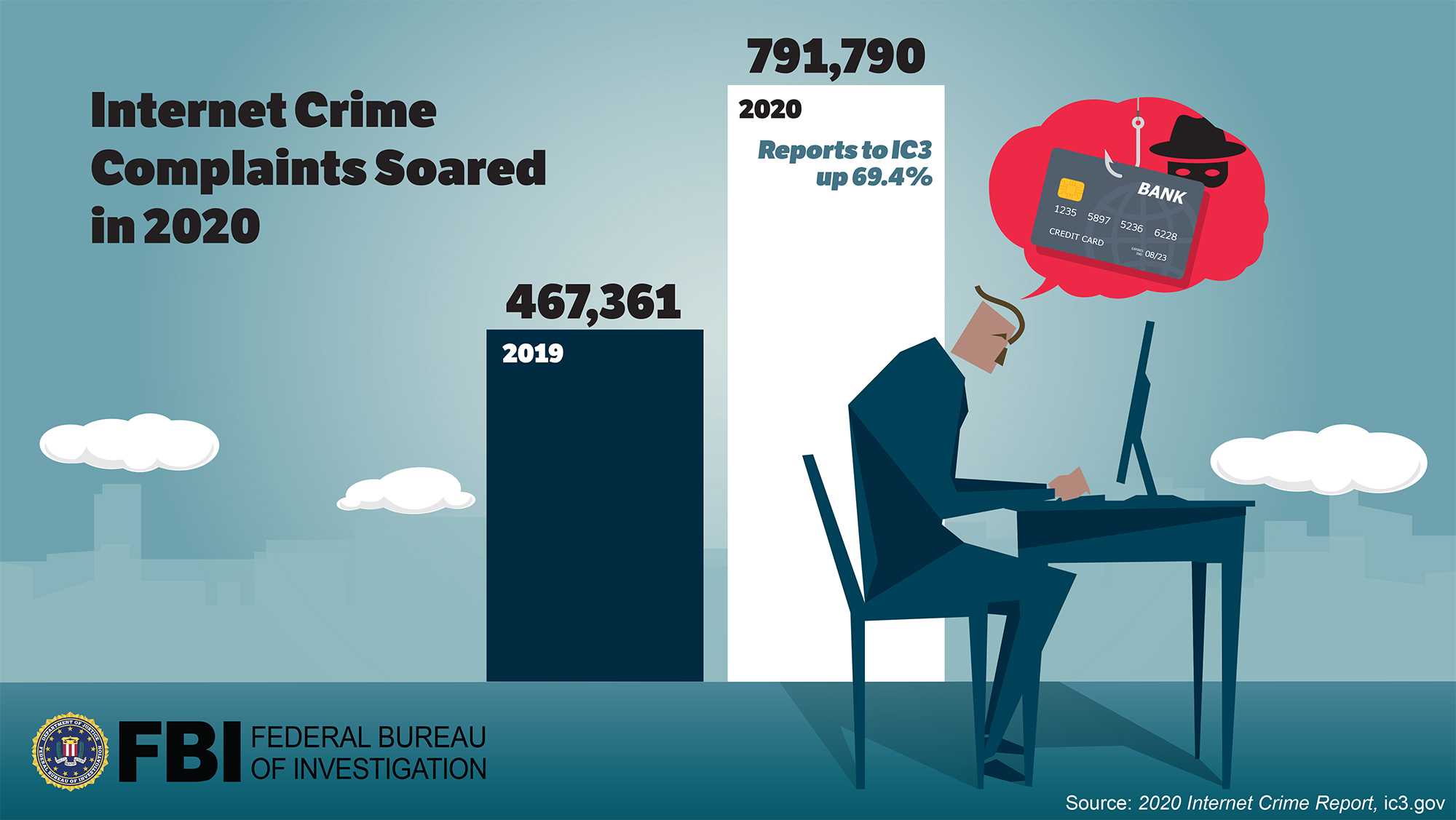Many large businesses have teams and departments dedicated to cybersecurity, but that’s not feasible for a small business. However, being “small” doesn’t make cybersecurity any less important. This article reviews common cybersecurity threats and what you can do to keep your business safe.
What is Cybersecurity?
Cybersecurity is the process of protecting hardware (like cell phones, computers, servers, etc.) and software (programs, databases, email platforms, etc.) from any type of cyberattack.
Why do Businesses Need Cybersecurity?
Business systems are full of important and proprietary knowledge, including personal and client information, financial data, intellectual property, and even protected health data. You have a responsibility to protect that information, and cybersecurity is one of the tools that help do that.

Common Cybersecurity Risks for Small Businesses
Here are some of the most common cybersecurity risks you should know.
Malware
According to Cisco, malware or “malicious software” is “intrusive software designed to damage and destroy computers and computer systems.” Malware can take on many forms, including the following:
Viruses
A virus is a file that infects your computer. It can delete files, slow your system, and more. Viruses are usually installed by mistakenly opening an attachment in an email, clicking a link, or downloading an application that contains the virus.
Trojan horse
This malware is hidden in something you intended to download, like a game or file.
Spyware
If you watched the movie Ocean’s 8, you might recall Rhianna as the character Nine Ball, who installed spyware on their target’s computer. Spyware allows thieves to spy on the infected computer.
Ransomware
Ransomware is a type of malware installed on your computer to hold information for ransom. Generally, unless you pay a fee as ransom, your files will be deleted, or compromised information will be shared publicly.

Phishing
When a cybercriminal wants steal something like banking information, passwords, and social security numbers, they do what’s called a phishing attack. Phishing uses “bait” in the form of a text or email that looks legitimate. For example, you may get an email from your “bank” asking you to reset your password, but in reality, it is a fake email used to capture the username and password of your bank.
Hacking
One of the most common (illegal) ways to access important business data is by hacking into your computer. This is done by determining your password. Be careful not to use common passwords such as “Password,” or the names of your children or pets. And don’t use the same passwords for multiple accounts.
Cybersecurity Tips for Small Business
Now that you understand the types of threats, here are some ways to protect your small business against them.
- Have a plan: What will you do if you experience a cybersecurity threat? You should create a plan in advance to be ready. Be sure to educate employees on what to do and who to contact if they notice something wrong or accidentally click on a phishing email.
- Back up your data: Imagine losing years of work because of a computer virus. One easy way to mitigate this risk is to back up your data.
- Train your employees: Spending a small amount of time each year to remind your employees of how to protect against cybersecurity threats can prevent a lot of heartache in the future.
- Create company-wide security policies: Once you create your security policies, you can easily automate them. For example, if your policy is that employees must reset their password every 3 months, automatic reminders can be set to remind them of this task.
Specific Tips for Specific Threats
Malware
- Purchase software: One of the best ways to fight malware is to purchase software that automatically scans for threats and prevents them from affecting your computer and network.
- Update your applications and operating system: Often, there are vulnerabilities in older versions of applications and operating systems. Make sure you update these to avoid these vulnerabilities.
- Don’t click on pop-ups: If you see a pop-up, carefully close it and don’t click the link.
Phishing
- Educate your employees: Cybercriminals are very good at making people curious and enticing people to click on emails. The best way to fight against well-crafted phishing emails is to educate your employees on what to look for so they never open them in the first place.
- Check the sender: Phishing emails look legitimate, but if you carefully check who sent the email, you may find it’s an email address that doesn’t look familiar. When in doubt, double-check the email address of the sender.
- Create spam filters: Your employees won’t have to question whether an email is legitimate or not if they never see it. Setting up spam filters also automatically pushes phishing emails to the “junk” email folder.

Hacking
- Change passwords regularly: If you or your employees are still using the same password from 2 years ago, it’s time to change. Make it a common practice for your employees to change their passwords regularly and train them on how to create a “good” password.
- Don’t leave your devices unattended: Be careful not to leave your phone or computer unlocked and unattended, even for a few short moments. Also, do not let people borrow your phone to make a call or send an email. You never know what they could be doing in a few short seconds.
- Use multi-factor authentication: A great way to keep hackers at bay is to set up multi-factor authentication. This type of system requires people to log in with a special code sent to their phone via a text or special application.

According to BullGuard, 43% of small to medium-sized businesses have no cybersecurity plan. By initiating some of the practices we’ve reviewed, you’ll be better prepared to protect your business and avoid damaging threats.